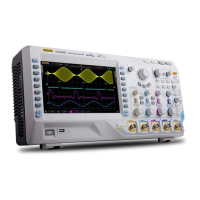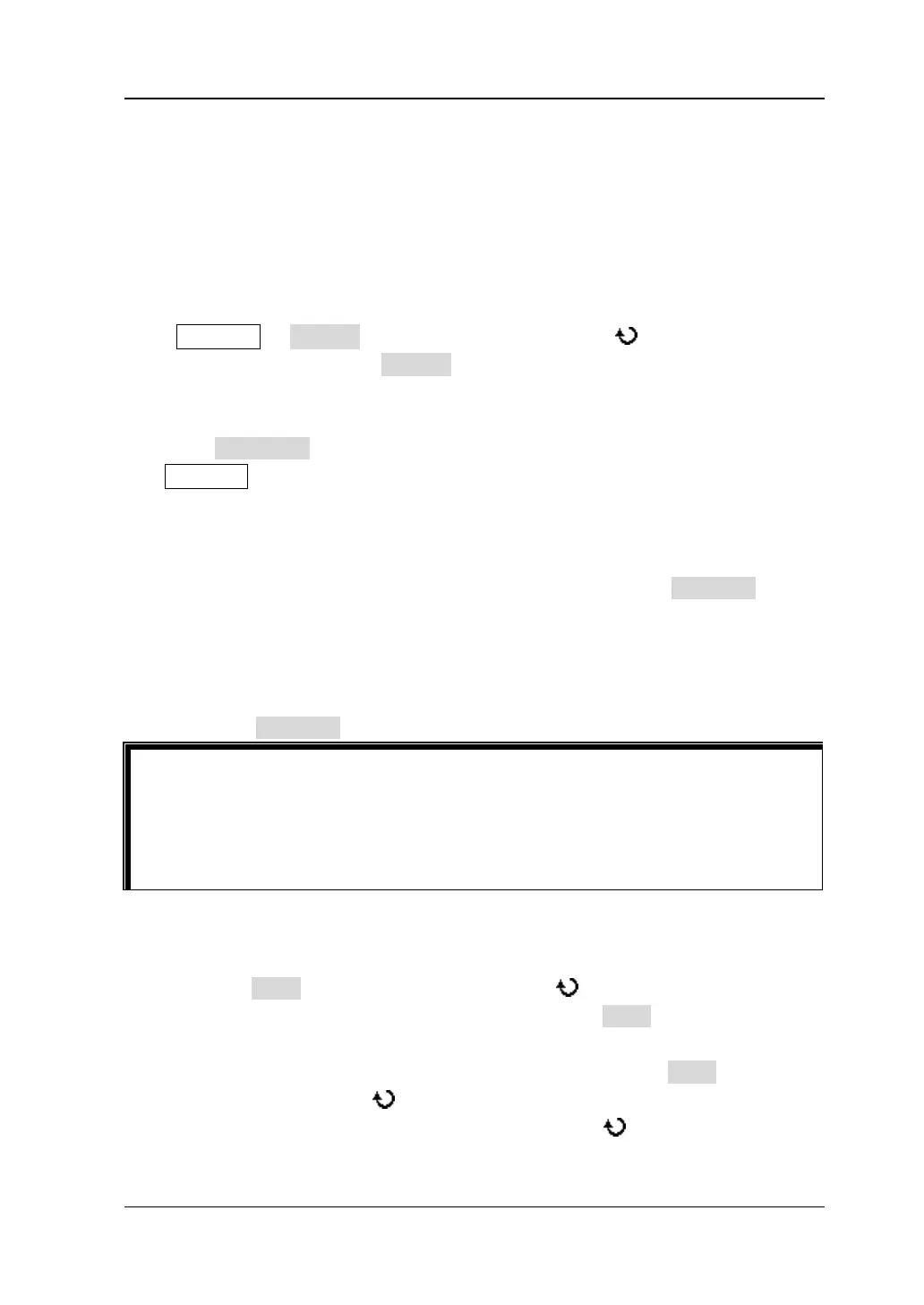Chapter 7 Protocol Decoding RIGOL
DS4000E User’s Guide 7-13
I2C Decoding (Option)
I2C serial bus consists of the clock line (SCLK) and the data line (SDA). The
oscilloscope samples the channel data on the rising edge of the clock signal and then
judges each data point as logic “1” or logic “0” according to the threshold level set.
Press Decode1 Decode, turn the multi-function knob to select “I2C” and
press the knob. You can press Decode continuously to switch to “I2C”.
1. Turn on or off the Decode1
Press BusStatus to turn the Decode1 display on or off. You can also press
Decode1 to switch the current on/off status of the Decode1 display. When the
bus display is turned on, the interface is as shown in Figure 7-4.
2. Quickly apply the current I2C trigger setting to I2C decoding
If the current trigger type of the trigger system is I2C, press CopyTrig to copy
the current clock signal and data signal settings (SCL and SDA) of I2C trigger
setting and apply them to the I2C decoding function (SCLK and SDA). The
threshold level setting will also be copied.
Note: The copy function is only available when the current trigger type is “I2C”;
otherwise, CopyTrig is not available.
Tip
When the current trigger type is “I2C”, performing the copy operation at any time
can quickly apply the current I2C trigger setting (the specified parameters) to I2C
decoding. Then, you can still set the I2C decoding parameters according to the
introductions below.
3. Set the Clock Signal (SCLK) and Data Signal (SDA)
Set the SCLK
Press SCLK; turn the multi-function knob to select the desired clock
channel and press the knob. You can also press SCLK continuously to
switch the current clock channel.
When a channel (CH1 to CH4) is selected, you can press SCLK and turn the
multi-function knob
to adjust the threshold (the default is 0 V) of the
clock channel. Pressing the multi-function knob
can quickly reset the
threshold of the channel to 0 V.

